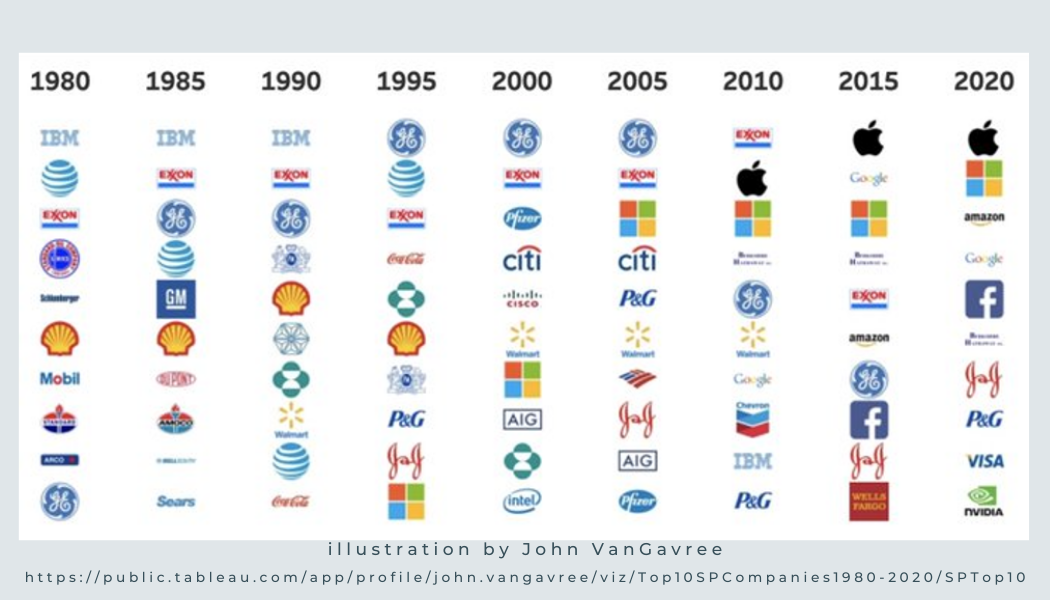This chart is eye grabbing.
Most reading this blog will easily recognize the vast majority of these logos. You aspired to work at some, you DID work for some.
One logo immediately caught my eye. In my days as a credit analyst, I signaled they were facing headwinds. In return, I got an extreme dressing down. The summation of that boss’s lecture? They were one of the largest companies in the country so how could I possibly even think to suggest that they were anything but stable?
The companies that have fallen off of this chart have done so for various reasons, for some it was hubris, for others an inability to pivot, in other cases, tastes change. A lack of innovation led to the demise of many.
Just yesterday, Jack Kelly had a piece in Forbes about the ultimate innovation: tailoring jobs to the individual needs of the various workers. Given the current labor and talent shortage in the U.S., this is exactly the right sort of solution for many organizations.
When firms can keep a clear focus on the deliverable, the output, where or how something gets done is less important.
Kelly says:
Consider how much better work would be if managers held conversations with their team, actively listened to how they’d like to work and then designed the job around their needs. Morning people could start early. Night owls can begin later in the day.
I lived this. Over 20 years ago at PwC, we had a well-oiled team that knew each other’s bio-rhythms and peak productivity hours. We joked that there were probably only three hours that someone from our group wasn’t awake and available; one person was an extreme lark that got into the office at 5:00 am, while another was such an extreme night owl that we regularly got emails from him at 2:00 am, working remotely. That is when I started experimenting with working from home … which one secretary dreaded because in uber-efficiency mode I banged through my To Dos, which then required her involvement.
As so many HR experts have reiterated: there are two ways to measure performance – inputs and outputs. Do you want to measure the hours that you see someone in (or their jacket on) their chair? Or do you want to measure what they deliver? The RESULTS.
Go back to that left hand side of the graphic. What happened to the temples those companies built? Big Stan in Chicago? GE Headquarters in Connecticut? The Sears Tower? They filled up with employees each morning and emptied every night.
Big buildings don’t matter. That S&P graphic is based on results.






